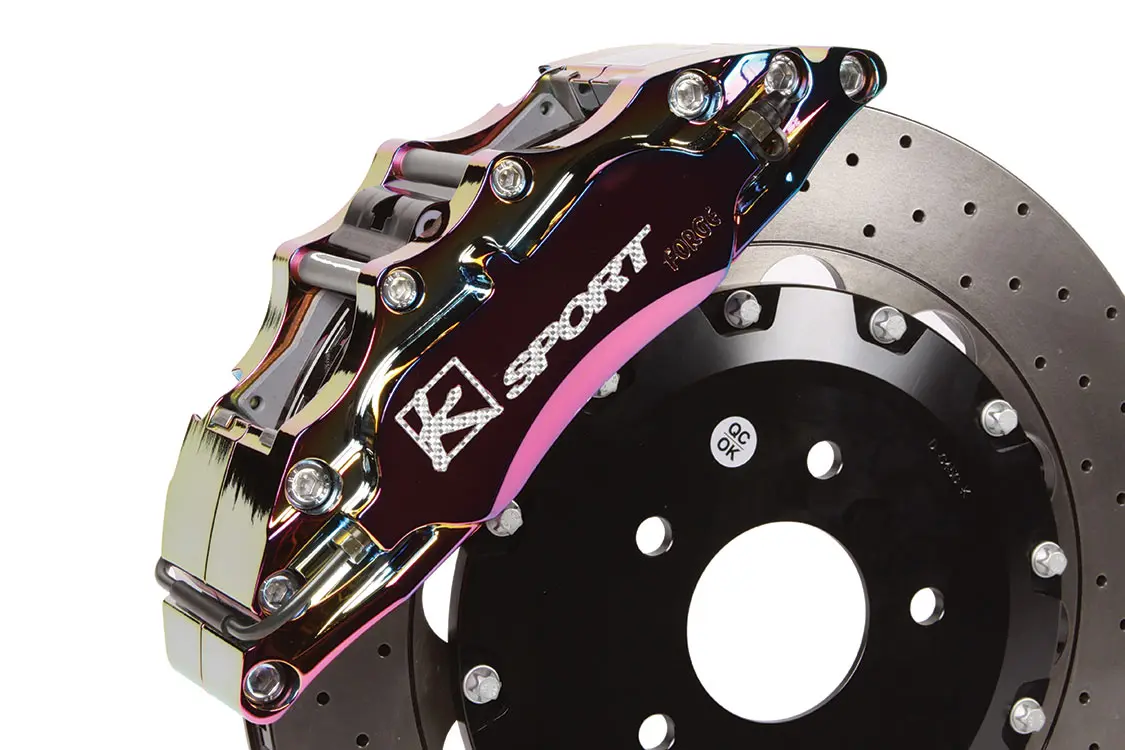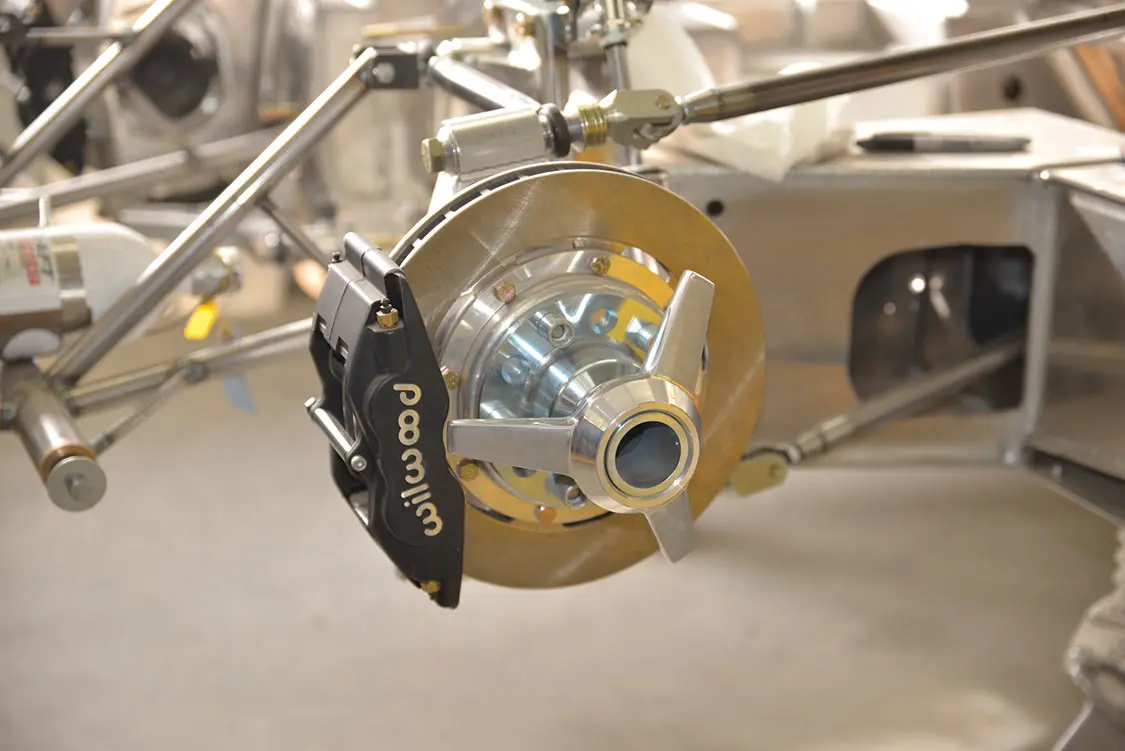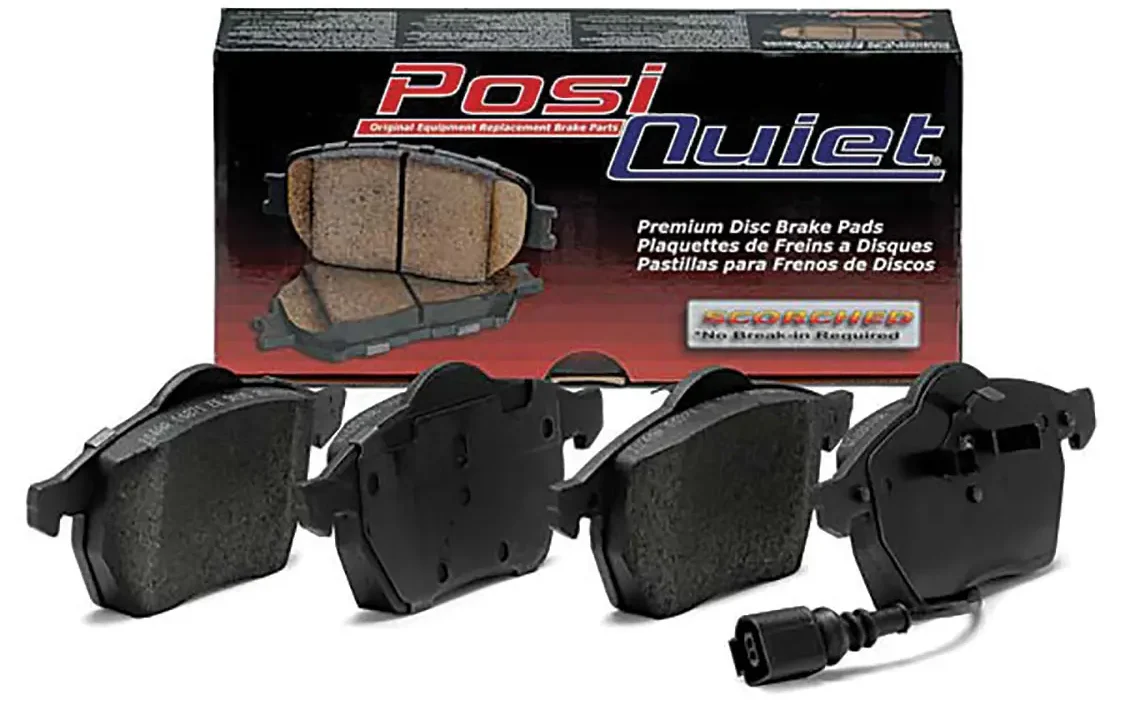 Dan Burrill
.
August 28, 2024
.
Drive Online
Dan Burrill
.
August 28, 2024
.
Drive Online

When we talk about your car’s brakes, we are really talking about the three main parts that make up the brake system at the wheels: the caliper, rotor and pads. Whether you invest in expensive rotors, fixed calipers or any other high-tech brake parts, two of the parts are going to be expendable, according to Michael Hamrick at Wilwood Engineering. The expendable bits are the brake pads and the rotors.
“When you have more confidence in the brakes, you will tend to use them more,” Hamrick says. “You’ll stop later, use the brakes harder and longer. And what happens to the expendable components is that they wear out faster.”


Depending on use and abuse, brake pad life is usually around 30,000 to 50,000 miles. The rear pads will last longer because 75 percent of your braking is done with the front wheels. And, of course, if you are racing the car on the weekends, the pads will wear even faster.
On the surface, all brake pads look more or less alike, but they have big differences in composition. Pads are the contact surfaces that govern your ability to slow and stop the car, and there are wide variations in design and materials that profoundly impact how well your vehicle stops.

More than simply creating pads that offer more friction, the thing to know about brake pads is that different materials offer more or less friction in different ways and at different heat levels. You need to choose your pad to offer you the best braking for the kind of driving you’re doing. So even if your car is a built-pro street model, it’s really about how you use it and not about its ultimate performance potential. The key here is the operating temperature of the rotor.
Racing pads are designed to offer their best grip when the pad and rotor are very hot—as they would be on a race car in the middle of a race. However, they may offer substantially less grip than basic pads when your brakes are cold.

In most street driving, your brakes may never get hot enough to get the benefit of racing pads. Plus, racing parts are expensive and may eat through your rotors faster than a pad designed for street use. By the same token, you don’t want to take your car to the track for a long day of performance driving with basic street pads on the front end. The reason being is that brake temperatures can shoot past 1000 degrees F and few standard brake pads will tolerate that.
“Avoid the temptation to buy cheap pads, even if you never drive your vehicle hard,” says Warren Gilliland of TBM. “You may get a pad that will live twice as long, but it will eat your rotor up and then you get to replace both pads and rotors.”

As we mentioned, the front brakes perform about 75 percent of the work to stop your car. The rears have been designed to perform less work for the simple reason that rear lockup tends to cause cars to spin out, while front lockup creates understeer.
The average driver can’t cope with a rear-end lockup, and even the most skilled drivers try to avoid it. So your first order of business is to buy the best front pads you can find. Don’t worry too much about the rears unless you have a lot of miles. Chances are good that your rear pads don’t need to be replaced the first time you replace front pads anyway, and maybe not the second time. “If you can get your head in there, you can look at your brake pads through the caliper and see how much pad you have left,” Gilliland says.

The main types of brake pad on the market today are ceramic, semi-metallic and pads made with advanced materials such as Kevlar or Aramid fibers.
“If your only concern is how your car looks and you want to avoid dusting up your wheels, you need a ceramic-based pad,” says Hamrick. “If you’re going to take the car to a track or run autocross, you need semi-metallic. If you’re going to go out and run the car longer than a 15–20 minute session on a racetrack, you need a full-out racing pad. You haven’t got a choice.”
All the manufacturers are in agreement that there’s no such thing as one pad that works well under all conditions, which is why we have so many choices.

Among the leading producers of ceramic-based pads is Carbotech. The company offers a wide variety of street and performance pads, and they also specialize in ceramic-based pads and drum brake shoes optimized for street or racing performance.
“The Carbotech 1521 is our high-performance street compound. Carbotech 1521 is a very low dusting and low noise compound with an excellent initial bite. The operating range starts out at ambient and goes up to 800 degrees F,” Carbotech states in its marketing materials.
The Brake Man (www.tbm.com) also offers stock replacement pads as well as full brake upgrade kits. According to Gilliland, they make pads and replacement rotors that will take more punishment than stock parts.
“We have a No. 82 performance street pad, and potentially people can upgrade to our stock replacement High Performance Super-Brake rotors. Then just upgrade the pads to our No. 82 in the rear,” Gilliland says.

Baer is another major player when it comes to brakes. They offer a full-line of high-end rotors, calipers and pads for every application. They offer some really heavy-duty drag racing brakes that are designed to mount directly to the factory spindles, with some modification. The kit for the Mustang, for example, is designed for heavier cars that might also see street use. The Baer system includes aluminum hubs with SKF bearings (available in 4 or 5 lug), and ARP studs.
On the high end, Wilwood’s PolyMatrix Q compound brake pads are ceramic-enhanced pads developed for ultra-quiet performance. The Wilwood friction material has improved stopping power over all types of OE pads, with quieter stopping and lower dust. These pads feature smooth engagement, long service life, quick recovery and high fade resistance.
So how do you know what you are buying? Well, you can check the numbers or letters on the pad or on the box. However, these codes are not the whole story, but they are a good place to start.
The tests required to assign these codes were developed by the SAE in the United States and are similar to other tests performed elsewhere around the world. The codes on foreign pads are the same as on U.S. pads.
A typical edge code starts with a three-letter identification code, then an alphanumeric code that references the type of friction material, two letters that specify the friction properties, and then a numeric date code that specifies when the pad material was produced.
The part of the edge code you care about most is the friction properties code. Friction is specified as E, F, G or H. As you might expect, E is the lowest friction rating, while H is the highest.
The first letter in the code is the pad material’s cold friction—think about the first time you apply your brakes in the morning. The second letter is the hot friction rating—when the brakes are fully up to temperature. In general, high-performance pads will have G or H ratings, while street pads will have E or F ratings. If a set of pads does not have these ratings, you’ll want to find out why. They may be knockoffs (fakes), or the manufacturer may simply choose not to participate in this program.
The only real drawback to these codes is that they don’t cover heat ranges, wear or dusting characteristics. But it is still a good guide.
To recap, the things you need to know when choosing a brake pad are pretty simple. What kind of driving do you plan to do? Are you worried about cleaning brake dust off your wheels? The answers are different for a show car compared to a car you plan to drive hard. Most of us will find that we don’t need the most expensive racing pads on the market; we need a good all-around pad. High-performance racing pads aren’t any more visible than stock pads, so there’s no reason not to shop around and find a pad that truly meets your needs.
Early brake pads and drum brake shoes contained asbestos; they produced dust that should not be inhaled. These kinds of pads and shoes have not been sold in the U.S. since 1983.
So when you locate that barn find that hasn’t been moved in decades, be mindful when you go to clean up the brakes and wheels. Don’t just blow off that dust with your compressor. Wear your best respirator and use liquid cleaners to wash that material away. Your lungs will thank you for it! —Dan Burrill


Cleaning Your Rotors
Gilliland says: “One final thing to keep in mind: If you buy new pads, don’t put them over the top of the friction material that has already been transferred to the rotor. It’s very important to remove that. If the rotor’s in a good flat condition, a vibrating palm sander with 80-grit sandpaper will remove the material transferred from the stock pad. If you do not remove that layer, you can significantly impair the new pad from laying down the material to properly give you the performance you should have. Most people who think they have warped a rotor when they just have material built up unevenly on the rotor.”—Dan Burrill
Share Link